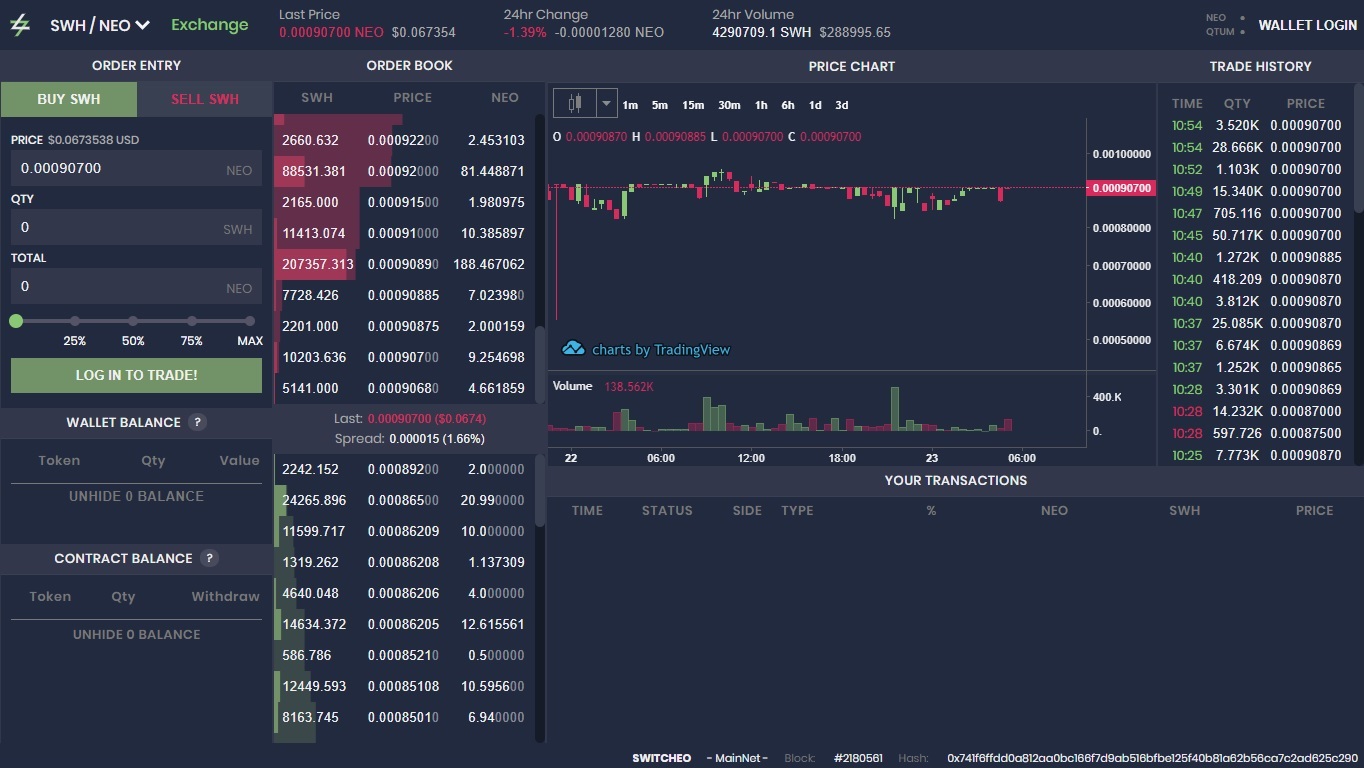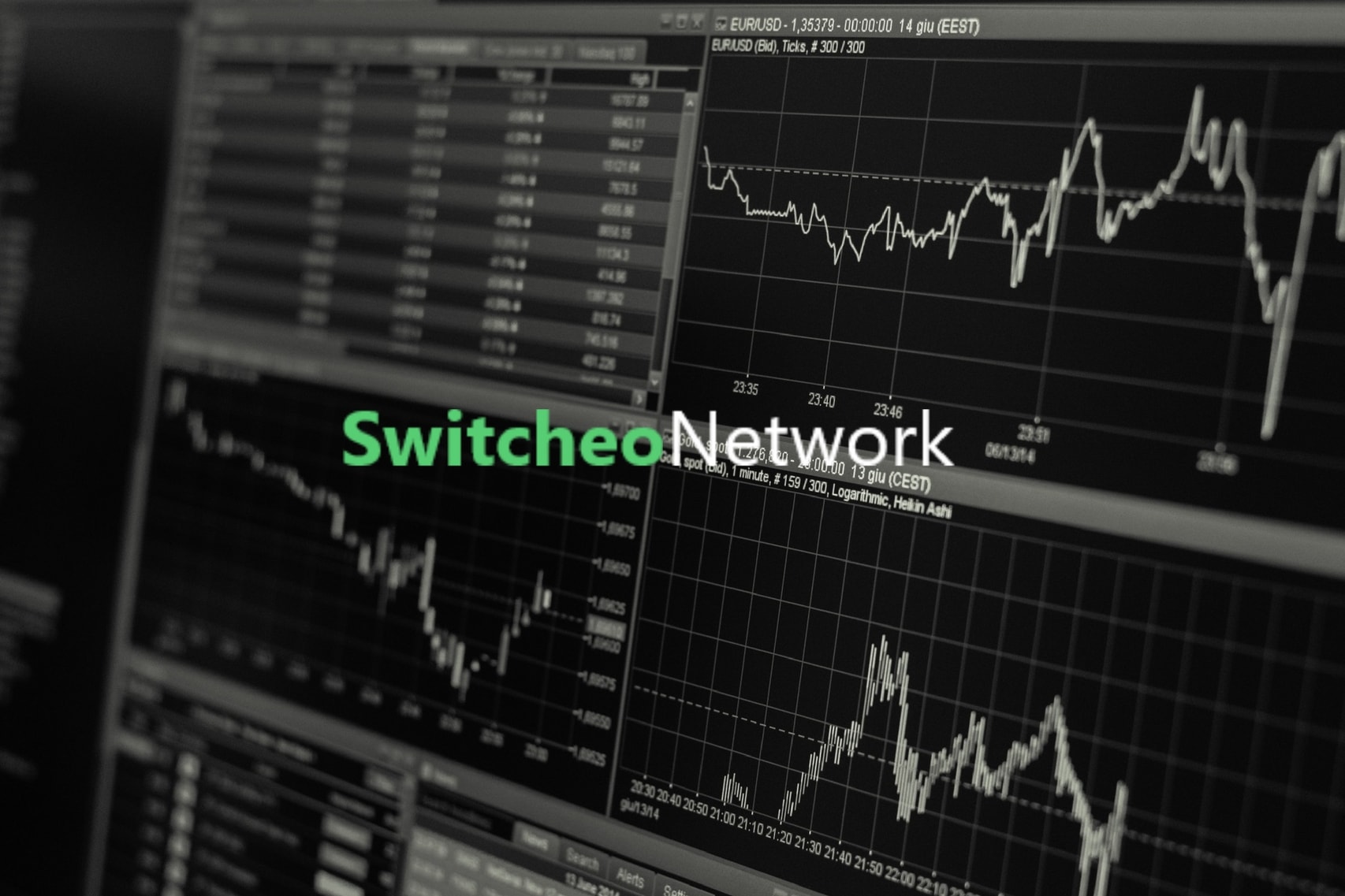As the second quarter of 2018 passes by confidently, brushing off any anxiety arising from the turbulence of the market, the birth of a new way of trading in the form of decentralized exchanges remains one of the most exciting prospects of the year.
Compromises, limitations and regulations has suffocated the cryptocurrency market, with countries like India imposing an indirect ban on cryptocurrencies by ordering banks to deny services to exchanges. In the midst of this uncertainty, decentralized exchanges could serve as saviors to a market that needs to break a crucial barrier of adoption to realize its true potential.
It then comes as good news that NEO, the Chinese smart contracts platform that is a direct competitor to Ethereum, now has its first decentralized exchange built on top of it.
Switcheo ended its token sale on March 17 and raised $8.7 million in its ICO, hitting its target in one day. The decentralized exchange officially launched on March 31, 2018.
What Makes Switcheo Different?
Decentralized exchanges offer a range of advantages over centralized exchanges, such as better security, quicker exchanges, and greatly reduced trading fees. Switcheo, however, is attempting to set itself apart by by providing trading capability with multiple chains.

Rather than compete with other decentralized exchanges, Switcheo has said they wish to compete with Binance and KuCoin. Consequently, they have turned their focus to creating large volume and asset support, a friendly and intuitive user experience, and the resolution of the scaling problem for high volume trades on DEXs.
NEO is the first stop in a journey to cover QTUM and Ethereum-based tokens. Currently, NEO, GAS, and other NEP-5 tokens such as Ontology (ONT), The Key (TKY), DeepBrainChain (DBC), and QLINK (QLC) are tradeable on the DEX. A total of 24 coins is available for trading. Support for QRC-20 and ERC-20 tokens is expected in the second and third quarters of 2018. The team is also considering the inclusion of the Stellar blockchain. This cross-chain swapping is an important long-term priority that Switcheo hopes will make their DEX a hub for trading.
The exchange requires users to login via a JSON file, encrypted key, or private key, which foregoes the need to create a user account. Additional features include the automatic retrying of failed trade attempts and an API that stores and presents order history in a convenient format for other applications.
The exchange will also have its own token, SWH, which has been included as a base pair. The purpose of the coin is for it to be used in cross-chain exchanges. The last quarter of 2018 will see the introduction of a cross-swap feature that uses SWH and Wanchain.
Switcheo details the specific operations of smart contract trading in their whitepaper.
The Near Future for Switcheo
Barring one small stumble in the week after launch, where delays in withdrawal occurred, Switcheo has had a promising first few weeks. It has traded just under $700,000 in the last 24 hours. Binance and KuCoin, by comparison, are trading with volumes of $2 billion and $69 million respectively.
Yeu reports that improvements for Switcheo are necessary and has communicated the team’s priorities over the coming weeks. This includes confirmations in under 30 seconds, withdrawals in under a minute, transaction broadcasting on off-chain servers, and support for Ledger wallets.
To compete with major exchanges like Binance and Kucoin, Switcheo will have to make trading on their DEX as pain-free as possible. UI improvements seem to be a consistently important priority for them. This, coupled with the eventual support for several assets, could transform them into a strong trading centre.
Will NEO’s Ecosystem Grow as a Result?
From a purely trading perspective, this boasts very good news for NEO and NEP-5 tokens. Support for decentralized trading of these tokens is sparse when compared to other coins, and Switcheo’s launch means that NEO and NEP-5 tokens have been injected with new life.
Furthermore, all NEP-5 tokens become available for trading as soon as the ICO ends. It can be imagined that projects built on NEO will be motivated because of this, plus the aforementioned reduced trading fees with the use of the SWH token, which encourages trading on this particular DEX.
Considering that NEO is also developing its own DEX, the NEX, one might think that this would leave the two DEXs in direct competition. It doesn’t seem likely, however, and it is more probable that the two will complement each other. If Switcheo supports all NEP-5 tokens, then NEX’s tokens will be supported on it, and SWH token by NEX.
Now, there is an ever larger reason as to why NEO’s ecosystem could expand this year. Many of the NEP-5 tokens we mentioned, such as Ontology, DeepBrainChain, and TheKey, are launching their mainnets this year. With support from a DEX like Switcheo, we could expect to see large trade volumes and price jumps for these tokens.
It seems that we have an eventful year for NEP-5 tokens. Decentralized exchanges have hijacked many discussions, but within that sphere we now have a significant talking point in the performance of these tokens. No doubt, exchanges like Switcheo will act as a conduit of adoption for these tokens. On top of that, with several NEO-based mainnet launches, trading possibilities, and creation of decentralized applications puts NEO and its brethren even higher on the scale of investment opportunities this year.
You can place trade orders on Switcheo right now.
Related: Will NEO Have a Smooth Road Ahead?

